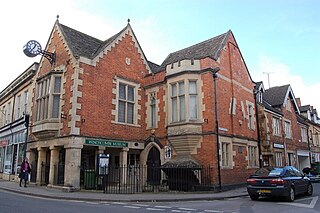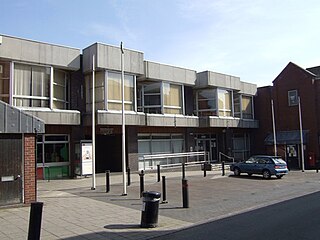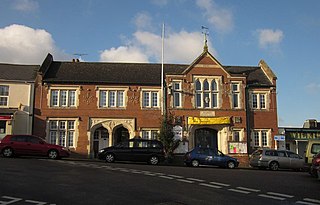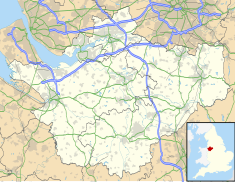
The Corn Exchange is an events and concert venue located on Wheeler Street in Cambridge, Cambridgeshire, England. The structure, which was commissioned as a corn exchange, is a Grade II listed building.

The Hazlitt Theatre and Exchange Studio, also known as the Hazlitt Arts Centre, is a theatre complex in Earl Street in Maidstone, Kent, England. The oldest part of the complex, which is now used as a shopping complex on the ground floor, and as a theatre venue known as the "Exchange Studio" on the first floor, is a Grade II listed building.

The Corn Exchange is a commercial building on The Payment in St Ives, Cambridgeshire, England. The structure, which is currently used as an events venue, is a Grade II listed building.

Corn exchanges are distinct buildings which were originally created as a venue for corn merchants to meet and arrange pricing with farmers for the sale of wheat, barley, and other corn crops. The word "corn" in British English denotes all cereal grains, such as wheat and barley. With the repeal of the Corn Laws in 1846, a large number of corn exchanges were built in England, particularly in the corn-growing areas of Eastern England.

Crewe Municipal Buildings is a municipal building in Earle Street, Crewe, Cheshire, England. The buildings, which formed the headquarters of Crewe and Nantwich Borough Council, are Grade II listed.

Sandbach Town Hall is a municipal building in the High Street in Sandbach, Cheshire, England. The structure, which is the meeting place of Sandbach Town Council, is a Grade II listed building.

Wareham Town Hall is a municipal building in East Street, Wareham, Dorset, England. The town hall, which is the meeting place of Wareham Town Council, also hosts the Wareham Town Museum.

The Municipal Offices is a municipal building in Bowling Green Road in Kettering, Northamptonshire, England. The building is used as an area office for North Northamptonshire Council.

Liversedge Town Hall is a former municipal building and town hall on Knowler Hill in the town of Liversedge, West Yorkshire, England. The building, which formerly operated as the offices of Liversedge Urban District Council, is now used as private residential accommodation.

Burntisland Burgh Chambers is a municipal structure in the High Street, Burntisland, Fife, Scotland. The building, which is the meeting place of the Burntisland Community Council, is a Category B listed building.

The Corn Exchange is a commercial complex in the High Street, Rochester, Kent, England. The complex, which was commissioned as a corn exchange and is now used as an events venue, is a Grade I listed building.

The Corn Exchange is a commercial building in Gloucester Street in Faringdon, Oxfordshire, England. The structure, which is currently used as a community events venue, is a Grade II listed building.

The Corn Exchange is a commercial building in Sandgate, Berwick-upon-Tweed, Northumberland, England. The structure, which is now used as an apartment block, is a Grade II listed building.

The Corn Exchange is a commercial building in the Market Place in Alford, Lincolnshire, England. The structure, which is currently used as a community events venue, is a Grade II listed building.

Higham Ferrers Town Hall is a municipal building in the Market Square in Higham Ferrers, Northamptonshire, England. The structure, which serves as the offices and meeting place of Higham Ferrers Town Council, is a Grade II listed building.

The Old Town Hall is a municipal building in St Mary Street, Newport, Shropshire, England. The structure, which is now divided into a series of shop units on the ground floor and used as a children's play area on the first floor, is a Grade II listed building.

Winchcombe Town Hall is a municipal building in the High Street, Winchcombe, Gloucestershire, England. The structure, which accommodates the Winchcombe Folk and Police Museum, is a Grade II listed building.

Mitcheldean Town Hall is a municipal building in the High Street in Mitcheldean, Gloucestershire, England. The structure, which operates as the offices and meeting place of Mitcheldean Town Council, is a Grade II listed building.

Whitchurch Civic Centre is a municipal building in Whitchurch, a town in Shropshire, in England. It accommodated the offices of Whitchurch Town Council until September 2023, when the building was closed, following the discovery of potentially dangerous reinforced autoclaved aerated concrete.

Colyton Town Hall is a municipal building in the Market Place in Colyton, a town in Devon, England. The structure is currently used as a community events venue.





















